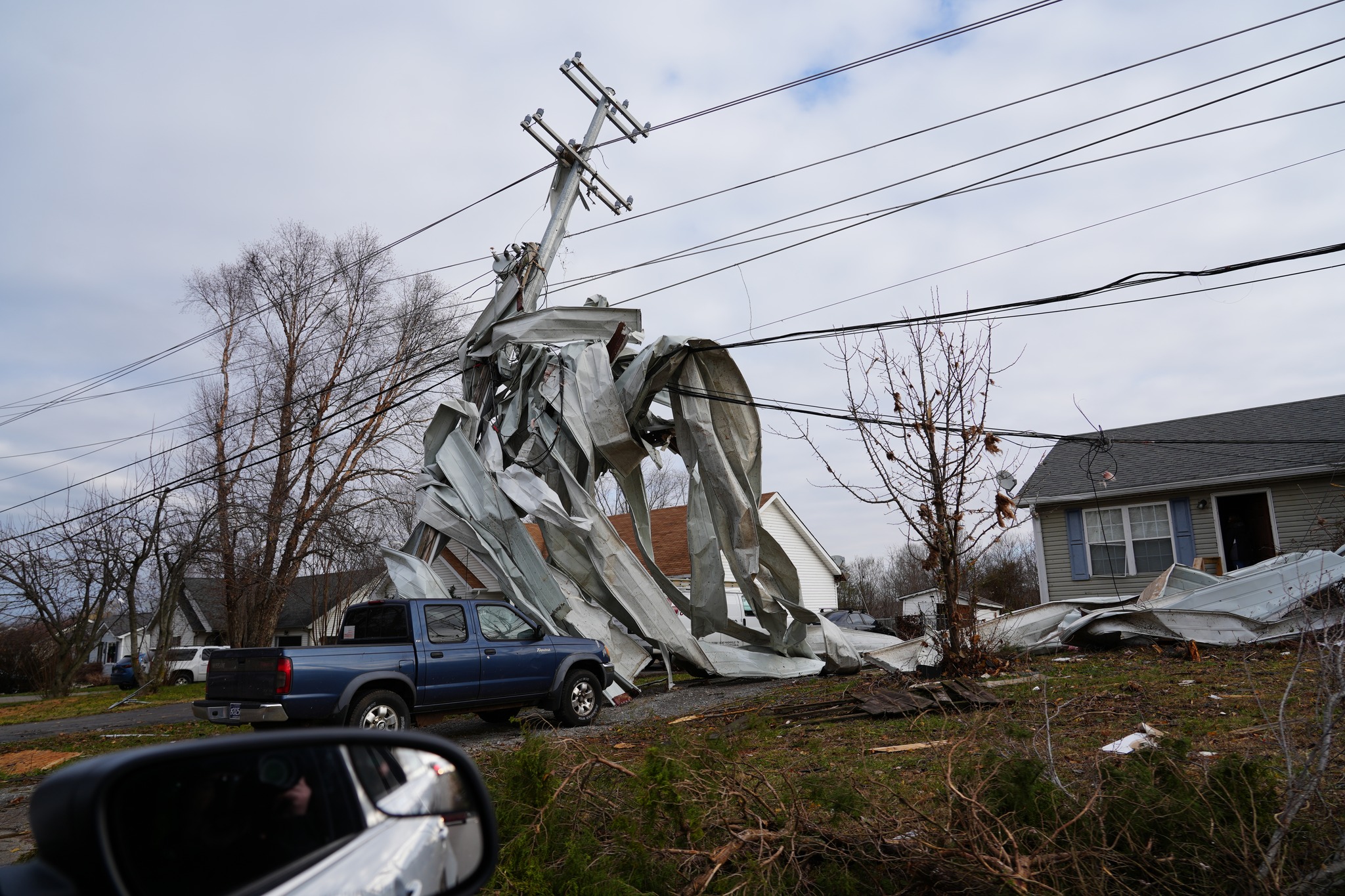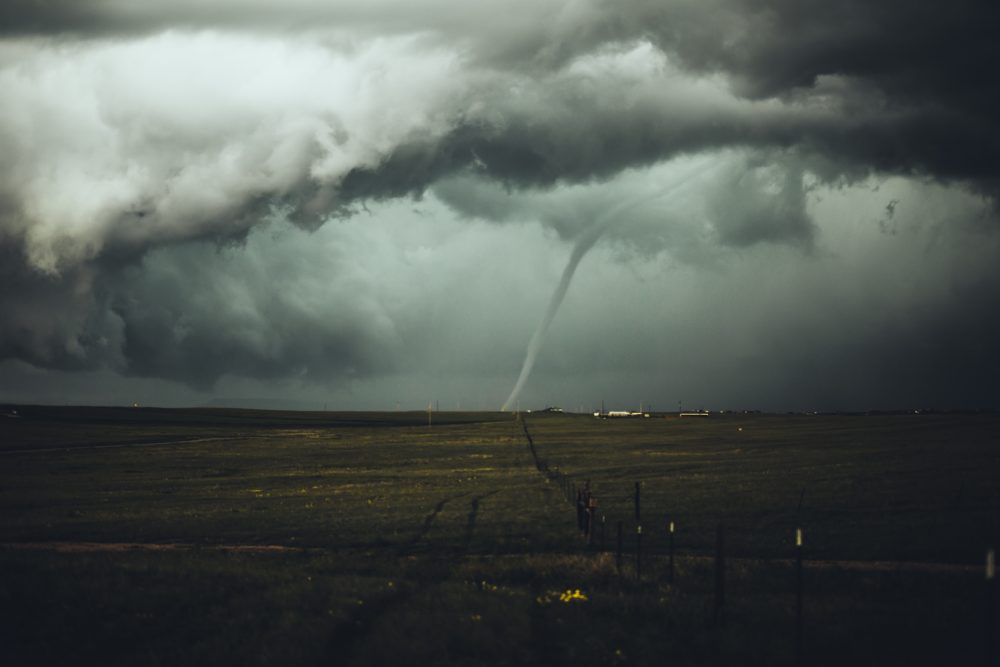What we’re watching: Weekly disaster update, December 11

We know all too well that disaster can strike anytime, anywhere in the world. Some disasters make headlines; others do not. Here at the Center for Disaster Philanthropy (CDP), we monitor the status of disasters worldwide and compile a list of the ones we’re tracking weekly, along with relevant disaster-related media coverage.
Here’s what we’re watching for the week of Dec. 11, 2023.
New or Emerging Disasters
Tornadoes – Tennessee: On the evening of Dec. 9, a large storm system moved into Middle Tennessee, spawning a major tornado outbreak that killed at least six people and injured more than 80. Preliminary damage assessments from the Tennessee Emergency Management Agency report 13 potential tornadoes affecting at least 11 counties.
The disasters left more than 18,000 homes and businesses without power as of the morning of Dec. 11, and although damage assessments are ongoing, hundreds of homes have been damaged. According to Nashville’s Davidson County Emergency Management Director Chief William Swann, damages in that county alone could cost an estimated $3 million.
For more, see our 2023 US Tornadoes disaster profile.
Tornadoes Issue Insight
This issue insight provides information about tornadoes and recommendations for philanthropy.

Cyclone – India: Cyclone Michaung made landfall near Bapatla in Andhra Pradesh state, India with winds of up to 70 miles per hour. Entire coastal towns were submerged, and the cyclone affected at least 390,000 in that state alone. Authorities in Andhra Pradesh evacuated around 15,000 people ahead of landfall.
In Tamil Nadu state, the disaster resulted in at least 18 people deaths. Approximately 9.4 inches (24 centimeters) of rain fell on Chennai, the capital of Tamil Nadu. India’s meteorological department classifies rainfall above 21 centimeters as “extremely heavy.”
Extensive construction around Chennai has limited areas for water runoff, contributing to flooding. Chennai is home to tech and auto industries, and small and medium enterprises may face more significant recovery challenges than large companies.
Flooding – Seychelles: Heavy rainfall has affected the Seychelles since Dec. 6, causing flooding and landslides that have resulted in casualties and significant damage for the small island nation off the east coast of Africa. The most populous island of Mahe, where most of the flooding occurred, is only about 16 miles long and 10 miles wide.
The flooding resulted in the death of three people and flooded homes, businesses and roads. In addition to the flooding, an explosion in Providence on Mahe in the early morning hours of Dec. 7 injured more than 100 people. The blast occurred in an explosives depot and destroyed nearby buildings. The twin disasters were unrelated, but President Wavel Ramkalawan cited the flooding and the explosion when announcing a state of emergency.
Wildfire – Chile: Since Dec. 6, several wildfires have been burning across central Chile, particularly in the Valparaiso, O’Higgins and Santiago Metropolitan Regions. Four major fires in the three regions injured seven people, and hundreds evacuated in Valparaiso.
Authorities issued a red alert, the highest such alert, and more than 150 firefighters are battling the blazes.
Previous/Ongoing Disasters
Earthquake – Philippines: A powerful earthquake struck the southern Philippines on the evening of Dec. 2. The quake shook parts of Surigao Del Sur and Davao Oriental province. The U.S. Geological Survey reported that the quake had a magnitude of 7.6 and recorded at least two additional earthquakes on Dec. 3.
The Pacific Tsunami Warning Center initially expected tsunami waves to reach the Philippines and other countries in the region but dropped its tsunami warning. As soon as Dec. 3, many people who had fled to evacuation centers began returning home.
According to the Philippines’ National Disaster Risk Reduction and Management Council, as of Dec. 11, the disaster affected over 705,000 people, killed three and damaged 5,635 houses.
In addition to the disasters listed above, we actively monitor the following disasters or humanitarian emergencies. For more information, see the relevant disaster profiles, which are updated regularly.
- Afghanistan Humanitarian Crisis
- 2023 Atlantic Hurricane Season
- Horn of Africa Hunger Crisis
- 2023 Libya Floods
- 2023 Morocco Earthquake
- Sudan Humanitarian Crisis
- 2023 Turkey-Syria Earthquake
- Ukraine Humanitarian Crisis
Complex Humanitarian Emergencies – Nigeria
Many places worldwide are experiencing emergencies caused by conflict, climate change, drought, famine, economic challenges and other conditions that combine to create a complex humanitarian emergency (CHE). CDP maintains complete profiles on several CHEs, and what CDP considers Level 1 CHEs are profiled in this weekly blog post and tracked.
In their October 2023 situation report for the country, the World Food Programme (WFP) said the operational environment, particularly in the northwest and northeast, is becoming “increasingly volatile.” Attacks on civilians are increasing, including abductions by non-state armed groups.
In the same situation report, WFP identified the drivers of food insecurity as “incessant insecurity limiting access to lands for agricultural production, reduced crop yields due to prolonged climate crisis (including 2023 dry spells), and rising inflation pushing up food and fuel prices with negative impact on household food consumption.”
The Famine Early Warning Systems Network blamed below-average harvest and poor macroeconomic conditions on Crisis or worse food security outcomes in Nigeria’s north.
Tragically, at least 85 civilians were killed when a Nigeria army drone attack mistakenly targeted a religious gathering in northwest Nigeria on Dec. 3. Officials said the military believed it was “targeting terrorists and bandits.” Nigeria’s President ordered an investigation, and Human Rights Watch said in addition to an investigation, authorities there should compensate survivors and loved ones of those killed and provide services to support their recovery.
Compounding the humanitarian crisis is a severe diphtheria outbreak that started with an unusual spike in cases in early July. Along with Nigeria, the affected countries in the World Health Organization’s Africa Region include Niger, Guinea, Mauritania and South Africa. Nigeria had most of the total suspected cases (16,616) and deaths (558) between Jan. 1 and Nov. 12, 2023. Vaccination campaigns with a diphtheria-containing vaccine are ongoing in Nigeria.
Join us this Thursday, Dec. 14
Webinar: Strangers in a strange land: Migrants and disasters in the US

What We’re Reading
- We rarely hear about the disasters that were avoided – but there’s a lot we can learn from them – The Conversation: Ilan Kelman, Ana Prados, Brady Podloski and Gareth Byatt describe their recent project on “Disasters Avoided.” They outline six overall patterns that can inform continued investment and scaling up.
- While Black Friday and Cyber Monday did well, Giving Tuesday lagged – CNN: According to data GivingTuesday Data Commons, the raw number of dollars donated, $3.1 billion, represents a 0.6% gain from 2022. However, the number of Americans who participated, roughly 34 million, indicates a 10% decline from last year.
- Nigerian philanthropy totalling half a billion in last five years – Alliance: A report published by the African Philanthropy Forum says Nigerian philanthropists have given a total of $434.17 million in the previous five years.
- Global Fund: 40% of country funding requests are now climate-related – Devex: “The Global Fund to Fight AIDS, Tuberculosis and Malaria announced that 70% of its funding will be spent in 50 of the most climate-vulnerable countries globally over the next three years.”
- What happened on COP28’s big humanitarian day? – The New Humanitarian: Two major policy trends that came to the fore were the launch of the Climate, Relief, Recovery and Peace Declaration, and a clear push for anticipatory action. However, Will Worley writes, “Some observers expressed concerns that with the same players in charge all the talk could remain just that.”
A lost tomato would typically not be considered newsworthy unless perhaps that tomato was lost in space. Eight months after being misplaced, the remains of one of the first tomatoes harvested in space have been found.
